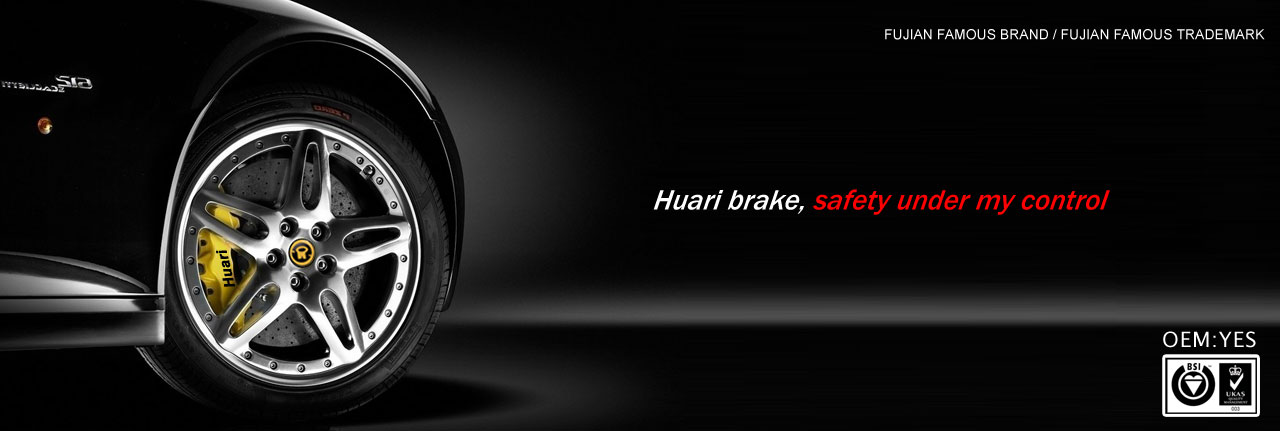How long do brake pads last?
The lifespan of a given set of brake pads is dependent on a very wide set of variables ranging from personal driving style to the impersonal laws of physics. Mechanics and manufacturers have a loosely agreed upon mileage range from around 30,000 to 70,000 miles (48,280 to 112,654 kilometers), but stories of pads lasting a mere 100 miles (160.9 kilometers) to an astounding 100,000 miles (160,934 kilometers) abound.
These far-ranging numbers are understandable. Pads come in an array of types and compositions -- from composite to metallic to ceramic -- and are attached to an even more bewildering array of brake systems and rotors, all of which affect the life of the pad. Added to the mix are heat, pressure and friction in amounts that would astound most drivers. Indeed the brakes, especially the pads, are some of the hardest working components in your car.
For the purpose of this article we'll deal solely with brake pads, meaning the pads used in caliper brakes rather than drum brakes. The pads used in drum brakes are referred to as "shoes." They serve the same purpose and are often constructed of the same or similar material, but they function in a slightly different way.
Let's begin addressing the longevity question by looking at what brake pads are made of, or their frictional material. Pads generally come in four types: organic, semimetallic, metallic, and synthetic. Each of these types has their own characteristics that must be weighed against brake pad life:
- Organic: Made from non-metallic fibers bonded into a composite material. The material is then treated with friction modifiers including graphite, powdered metals and even nutshells. Fillers are added to reduce noise and to affect heat transfer, among other factors.
- Semimetallic: This pad is a mix of organic material and metals -- ranging from steel and iron to copper -- molded and bonded to form the pad. These pads are harder and more resistant to heat.
- Metallic: This material, formed of a variety and mix of pressure bonded metals, was once used extensively in racing. Advances in organic and semimetallic pad composition have made metallic pads almost obsolete.
- Synthetic: This is what is often referred to as ceramic pads. These pads are made from a composite of non-organic and nonmetallic material, usually fiberglass and aramid fibers. These pads weigh about half the weight of the average pad, they are stronger, have better cold and hot stopping power and they last much longer than the average pad. They also cost about twice as much.
For the pad materials above, the best stopping power is found in the organic pads. But this same stopping power means more of the pad material is worn away during a stop. Because of this, organic pads last the least amount of time on average. Semimetallic pads, the pads that are now on most cars, are harder and last longer but they don't stop as effectively as organic pads do. The same goes for ceramic pads, though these pads do often last longer if the driver is willing to pay the price and have a slightly longer stopping distance.
And as pads are all about stopping it's time to take a look at mass. The reality of mass or specifically stopping a given mass -- like a car -- brings us to the physics behind pad wear.
At its most basic, a brake system converts the kinetic energy of a car into heat energy through friction devices -- namely the pads. How much kinetic energy is at work in a car is determined by its weight (I use this interchangeably with mass thought the two are not exactly the same), its speed and how much the speed changes. From a physics standpoint, kinetic energy is calculated by multiplying the weight of the car times the square of its speed. The product is then divided by 29.9 and the result is the amount of kinetic energy in foot-pounds.
A more practical application is this: Two cars are traveling at 30 miles per hour (48.3 kilometers per hour). One weighs 2,000 pounds (907.2 kilograms), the other 4,000 pounds (1,814 kilograms). The lighter car is generating 60,200 foot-pounds (81,620 newton-meters) of kinetic energy, the heavier car is generating 120,400 foot-pounds (163,240 newton-meters) of kinetic energy.
Our theoretical car is traveling and generating torque and essentially nothing is happening until the driver steps on the brake. Then a whole bunch of things happen. The brakes must overcome dynamic inertia (the car in motion) and impose static inertia (make the car come to a stop). It does this by changing the kinetic energy to thermal energy or heat -- and it generates a lot. The pads on the smaller car going 60 miles per hour (96.6 kilometers per hour) will reach about 450 degrees Fahrenheit (232.2 degrees Celsius) during an emergency stop. This, of course, can affect the life of the pad. Or, more simply put, every time a driver stops, or rides the brakes, the pads wear down, heat up and die just a little bit.
The final portion of this long equation on pad life has nothing to do with the pads directly. Remember, the pads must press against a rotor to slow the car. This is accomplished using a set of calipers, and the pads are pressed against a rotor.
A rotor may look like a simple piece of metal but it's designed very specifically to work with the calipers and pads. The mass of the rotor, as well as built-in heat fins, help dissipate some of the heat energy developed during braking and extend pad life. The surface also has a specific finish that is smooth enough to extend the life of the pad, but rough enough to allow effective braking.
Similarly, the calipers must work to correctly apply the piston and press the pads when needed, and release when not needed, too. A stuck or sticking caliper can mean a pad is in constant or too-frequent pressurized contact with a rotor. This increases the heat energy and premature wearing away of the pad.
The variables in a brake pad's life are so wide that setting a specific lifespan is almost impossible -- although 30,000 to 50,000 miles (48,280 to 80,467 kilometers) for semimetallic pads is a good guesstimate. Even the type of transmission a car has can affect pad life. Manual transmission drivers who know how to shift to control speed will see longer brake life than automatic transmission drivers. On the other end of the spectrum, people who ride the brakes, or brake very hard, often see their pad life halved when a simple shift in driving style could save them money.
Given this variety, the best way to handle pad life is to have them checked during routine oil changes. A set of brake pad gauges can be used to measure wear, and a good shop can tell you how much friction material you have left on the pad and how long they should last. Many pads have audible indicators as well. A small piece of metal, usually a spring clip, attached to one of the pads. When the pad wears down, the clips rub against the rotor and make a squealing noise.
Regardless of how long typical brake pads may last, always pay attention to the signs of brakes going bad -- fading power, loss of power when the brakes get hot, or pulling to one side or another during braking. All of these signs are an indication of brake pads going bad, and brakes are critical to a car's good operation.
2016-06-24 22:56:53
ADD:No. 1, Xiaban, Xiufeng Village, Shekou Town, Fu'an City, Ningde City, Fujian Province TEL:0086-0593-6388368||6558596 FAX:0086-0593-6338966 E-mail:brake@fjhuari.com / huari3348@126.com
Copyright ? 2013 Fujian Huari Automotive Parts Co., Ltd. All Rights Reserved.
Copyright ? 2013 Fujian Huari Automotive Parts Co., Ltd. All Rights Reserved.






